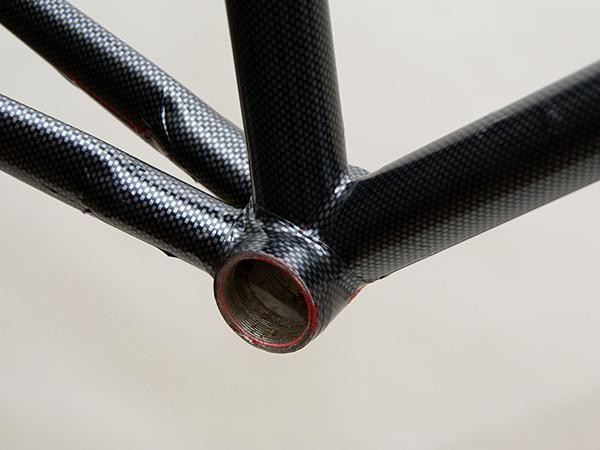On Test: Carbon fiber performance for everyone?
Carbon-wrapped aluminum seems to be the next frontier of materials technology and at least one...

Carbon-wrapped aluminum seems to be the next frontier of materials technology and at least one company thinks the benefits may be easier to come by than previously thought. Cyclingnews technical editor James Huang pulls up his sleeves to see if there's any truth to the company hype.
We're reasonably firm believers in the advantages of carbon-wrapped aluminum parts over their non-wrapped counterparts. When properly executed (purely cosmetic samples are obviously excluded from this group), the resultant components do seem to be nearly as stiff as full carbon parts but the aluminum cores retain the ductile failure mechanisms associated with most metals.
However, when Colorado retailer Chris Jacobsen first informed us of his intriguing Jacobsen Carbon Wrap-It system, we were rightfully skeptical. Jacobsen proposed that consumers could wrap their own frames and parts and achieve nearly the same results as far more expensive factory jobs. As such, his rather inexpensive do-it-yourself kit could transform relatively mundane aluminum frames, forks, stems, bars, or nearly any other bit into a stronger and stiffer equivalent, all at a surprisingly reasonable cost as well.
The goods
The kit is rather straightforward, consisting of a roll of pre-preg carbon fiber sheet complete with an easy-to-apply adhesive backing. Frame kits include enough to treat most typical aluminum frames, large diameter ones included, while componentry kits contain enough material to treat about four or five small parts, depending on what they are.
Items to be wrapped must first be carefully cleaned using the included non-toxic solvent. After approximating the amount and shape of material required, users then simply cut the pre-preg carbon fiber sheet to size with standard household shears then wrap the material tightly around the substrate. After a 24-hour waiting period to cure the adhesive, the treated bits are ready to go. An optional kit adds a heat-activated compressive layer to the assembly to reduce cure time while also improving bond strength and reducing voids.
We decided to go straight for the gusto and wrapped an entire frame, in this case an old bonded aluminum job that had been laying fallow in storage for several years after being unceremoniously retired. Total time required was roughly an hour, although more complicated frames could easily take twice that time. The installation process was a bit messy so we'd recommend wearing gloves and laying down a tarp to protect flooring but otherwise was pleasantly straightforward.
Get The Leadout Newsletter
The latest race content, interviews, features, reviews and expert buying guides, direct to your inbox!
To read the full special product review, click here.